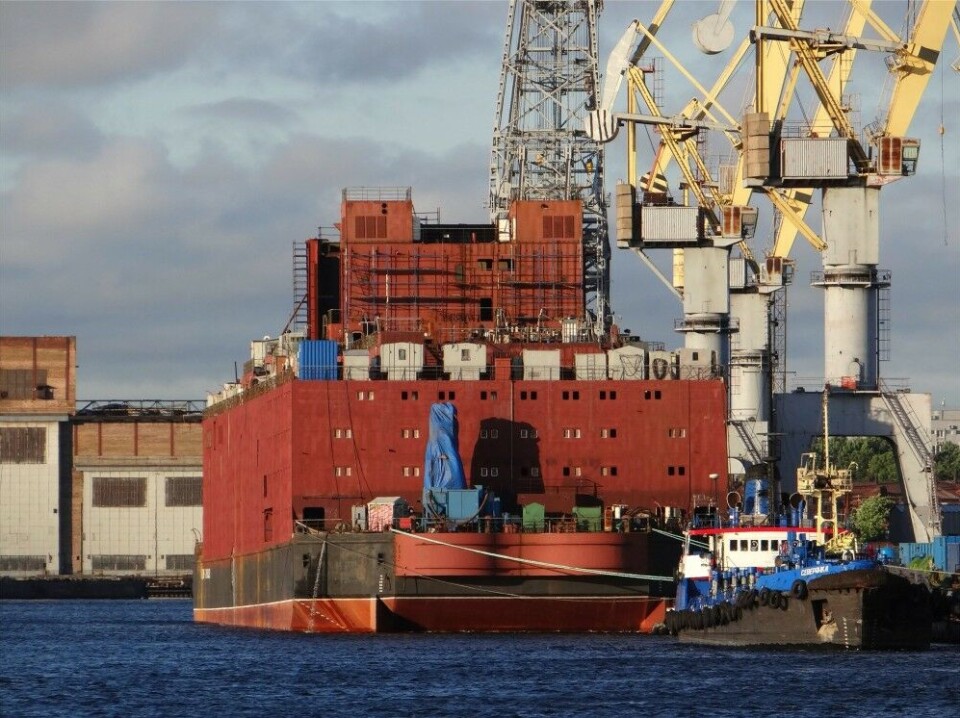
Uranium fuel will be loaded before towing around Scandinavia
Russia’s first-ever floating nuclear power plant is scheduled to sail out of St. Petersburg towards Murmansk in October 2017.
Before Christmas this year, the nuclear fuel will be loaded into the two reactors on board “Akademik Lomonosov” – the floating nuclear power plant currently under construction at the Baltiisky Zavod, reports Interfax.
The fuel-elements contain some 360 kilograms of low-enriched uranium-235.
Quoting Deputy General Director in Rosatom, Pavel Ipatov, Interfax writes that the floating nuclear power plant then will be ready for transport by October 2017.
Testing before towing
By loading the uranium fuel into the reactors nearly one year before shipping the plant to the Arctic is likely because the reactors will be tested in mooring trails at the yard.
That said, it also means that “Akademik Lomonosov” will have two reactors with irradiated nuclear fuel on board when the plant is to be towed through the Baltic Sea, Skagerak, North Sea and further north along the coast of Norway towards the Barents Sea.
Service base in Murmansk
In Murmansk, Rosatomflot has its service base for the world’s only fleet of civilian nuclear powered vessels, five icebreakers and one nuclear lighter-carrier. Here, maintenance and re-charging the nuclear fuel of the vessels take place.
“Akademik Lomonosov” will be towed along the north coast of Siberia to the Arctic port of Pevek the Chukotka Autonomous Okrug where it will be connected to the grid. Construction of coastal and hydraulic structures for the plant starts in May this year and the plan is to put the nuclear power plant into operation in November 2019, according to the news agency.
Russia has plans to build several more similar floating nuclear power plants, but construction work has so far been delayed.
History of delays and cost overruns
If ready by 2019, “Akademik Lomonosov” can look back on a 13 years’ history flavoured with increased costs and construction delays. Originally started at the Sevmash yard in Severodvinsk back in 2006, the hull was moved to the Baltic Shipyard in St. Petersburg in 2009 because the yard by the White Sea had to concentrate on building warships and submarines. In 2011, the floating nuclear power plant became central in the bankruptcy proceedings against the Baltic Shipyard.
IAEA has approved the technical features and physical protection of the floating nuclear power plant.
With some improvements, the reactor of the KLT-40s type is similar to the reactors on board Russia’s fleet of nuclear powered icebreakers.
















